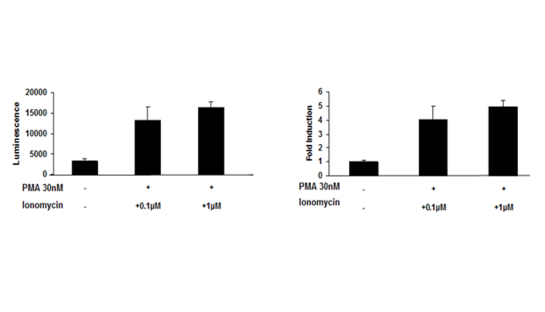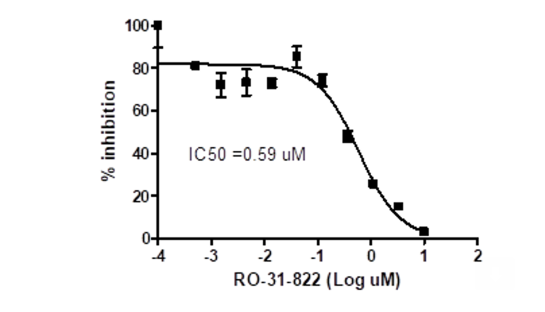NFAT Reporter – HEK293 Cell Line (PKC/ Ca2+ Pathway)
The NFAT Reporter – HEK293 cell line contains a firefly luciferase gene under the control of NFAT response element stably integrated into HEK293 cells. This cell line is validated for the response to the stimulation of phorbol 12-myristate 13-acetate (PMA) with ionomycin.
Interested in screening and profiling inhibitors, blocking antibodies, or activators of NFAT-mediated signaling without the need to purchase and license the cell line? Check out our Cell Signaling Pathway Screening.
Purchase of this cell line is for research purposes only; commercial use requires a separate license. View the full terms and conditions.
• PMA (LC Laboratories #P1680) Prepare stock solution in DMSO.
• Ionomycin (Sigma #I3909) Prepare stock solution in DMSO.
• Assay medium: Thaw Medium 1 (BPS Bioscience #60187)
• Growth Medium 1B (BPS Bioscience #79531)
• 96-well tissue culture plate or 96-well tissue culture-treated white clear-bottom assay plate
• RO-31-8220 (EMD Millipore #557520) or other PKC inhibitor
• ONE-Step Luciferase Detection Reagents (BPS Bioscience #60690) for measuring firefly luciferase activity.
• Luminometer



